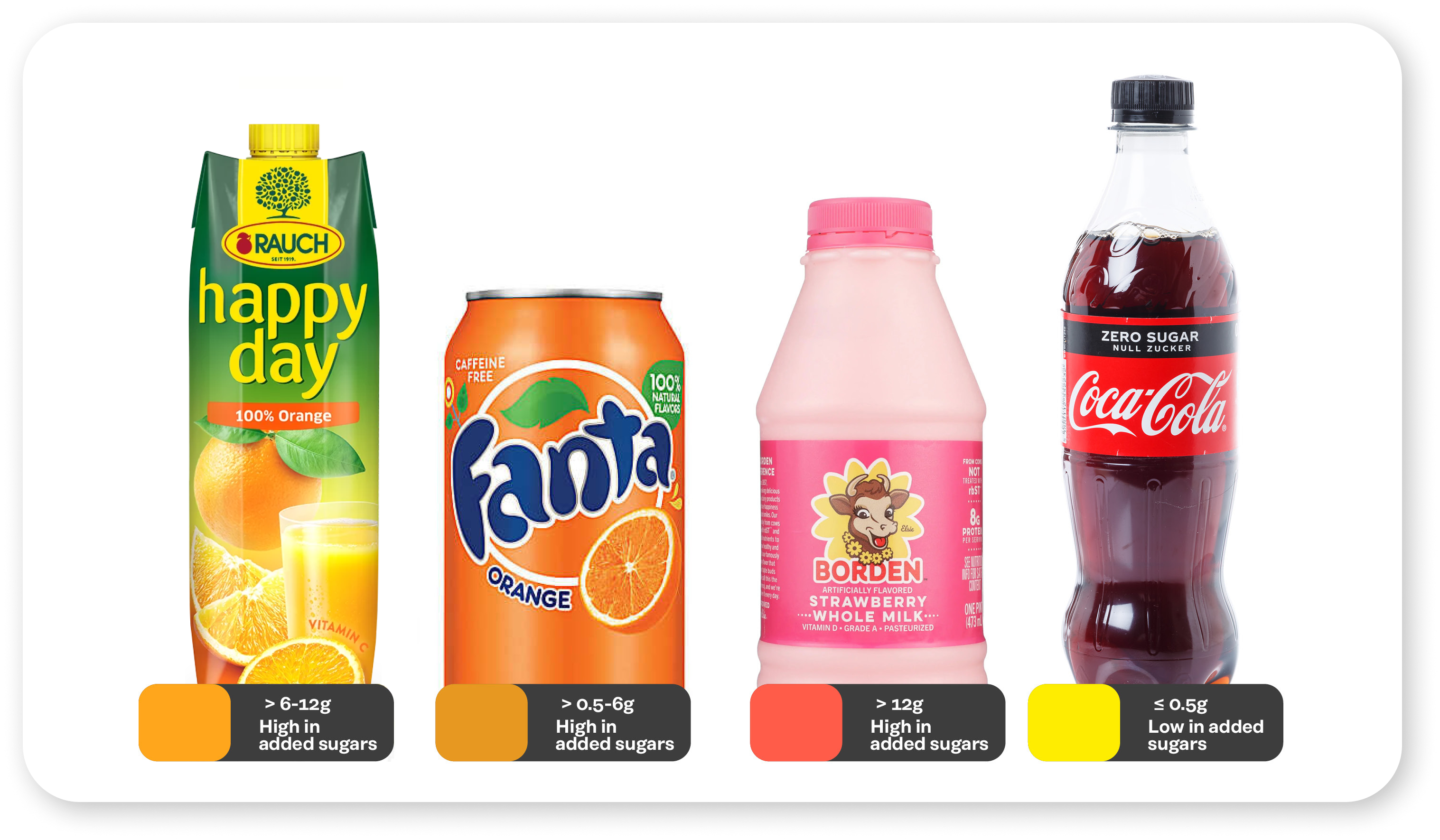Challenge
A global foundation dedicated to improving nutrition by promoting the consumption of safe and nutritious food teamed up with Premise to strengthen the campaign design of a social and behavior change (SBC) activity in Indonesia. The formative research surveys aimed to understand consumer behaviors and reactions to visual cues and their impact on consumer decision-making at the point of purchase of sugar-added beverages, including teas, juices, and sodas.
Solution
To understand whether sugar labels and product perceptions influence consumers to select the product they want to buy, the foundation utilized Premise’s extensive network of survey panelists to conduct large-scale data collection in which respondents reacted to campaign imagery embedded into Premise’s smartphone-based surveys.
The foundation started with a brief segmentation survey to segment the audience into those who consume sugary beverages (at least once within the last 90 days). The resulting audience segment—largely young adults—was then given a longer survey to better understand behavioral factors at play. Prompting the respondents to look at visual cues, the survey questions were designed to test the efficacy of sugar labels by assessing the respondents’ ability to 1) identify beverages perceived to have more or less sugar, and 2) evaluate the perceived health implications of daily consumption of such products.
The survey was also designed to help the foundation understand how the amount of added sugar affects consumer sentiments—either encouraging or discouraging consumption—and the frequency with which sugar labels influence beverage purchase decisions.
Findings
The survey obtained 4,782 responses across eight provinces of Indonesia and revealed compelling insights into consumer behavior. Over 90% of the audience segment said they consume at least one sugar-sweetened beverage a week, making them a good audience for testing the effectiveness of sugar labels. Of those respondents who noticed the sugar labels while shopping recently, only 45% “sometimes” checked the sugar content when choosing sugar-sweetened drinks.
Overall, the survey results indicated that people are receptive to sugar labels and can more accurately determine high sugar content when color-coded labels are added to the beverage label compared to when no sugar labeling is added.
Implications
Access to the valuable observations from Premise allowed the customer to:
- Measure the frequency of sugary beverage consumption across Indonesia.
- Understand the impact of packaging, colors, and branding on beverage purchase decisions and the ability of the campaign visuals to influence attitudes, behaviors, and social norms.
- Advise partnering grocery stores on effective labeling strategies that will aid consumers in making healthier decisions.
Conclusion
Given Indonesia’s ranking as the third-highest consumer of sugar-sweetened beverages in Southeast Asia, the survey’s findings hold immense importance for researchers, health professionals, students, and decision-makers. These insights can help enhance public awareness of sugary beverage consumption and its associated impacts. Furthermore, by conducting large-scale testing of SBC campaign messaging and content, organizations can amplify their impact through highly targeted interventions to promote healthier dietary choices.

